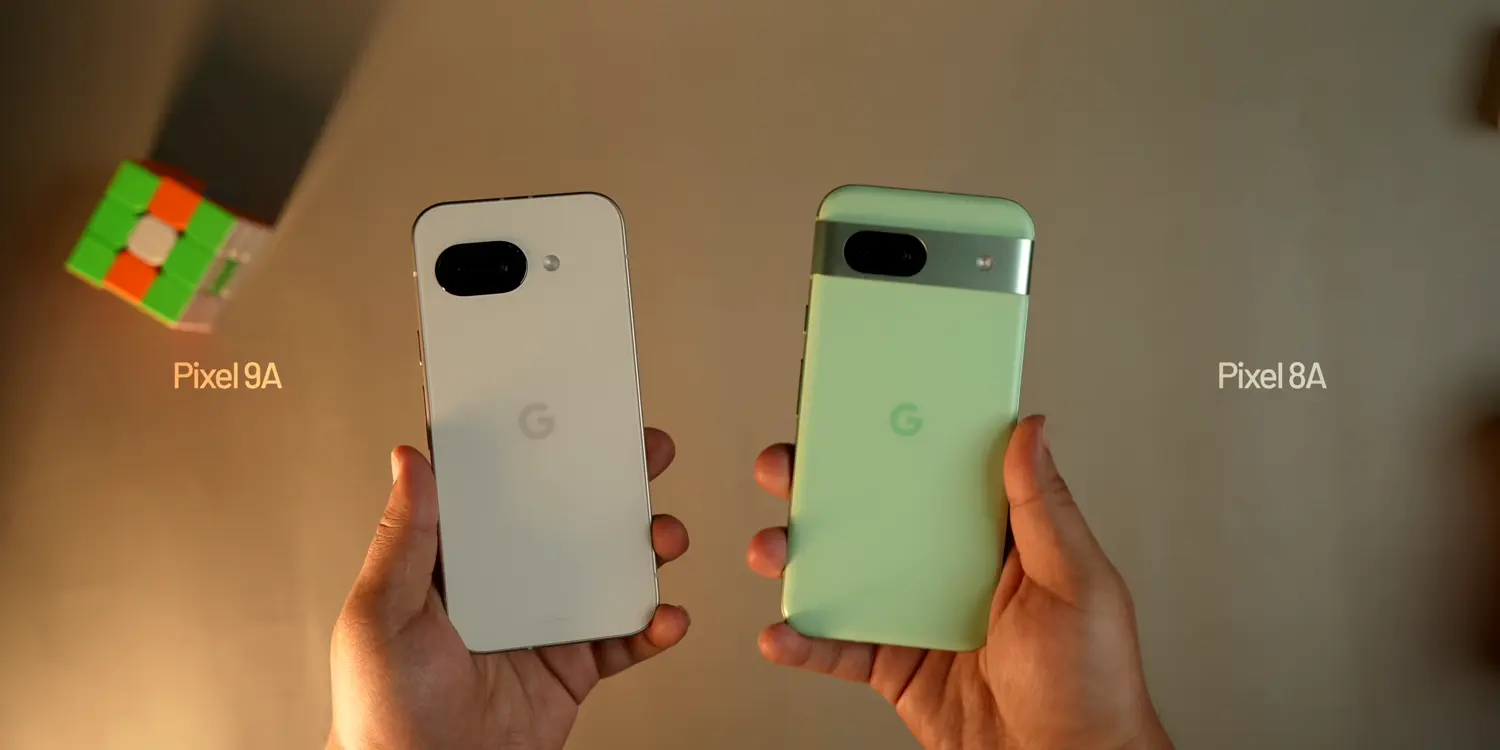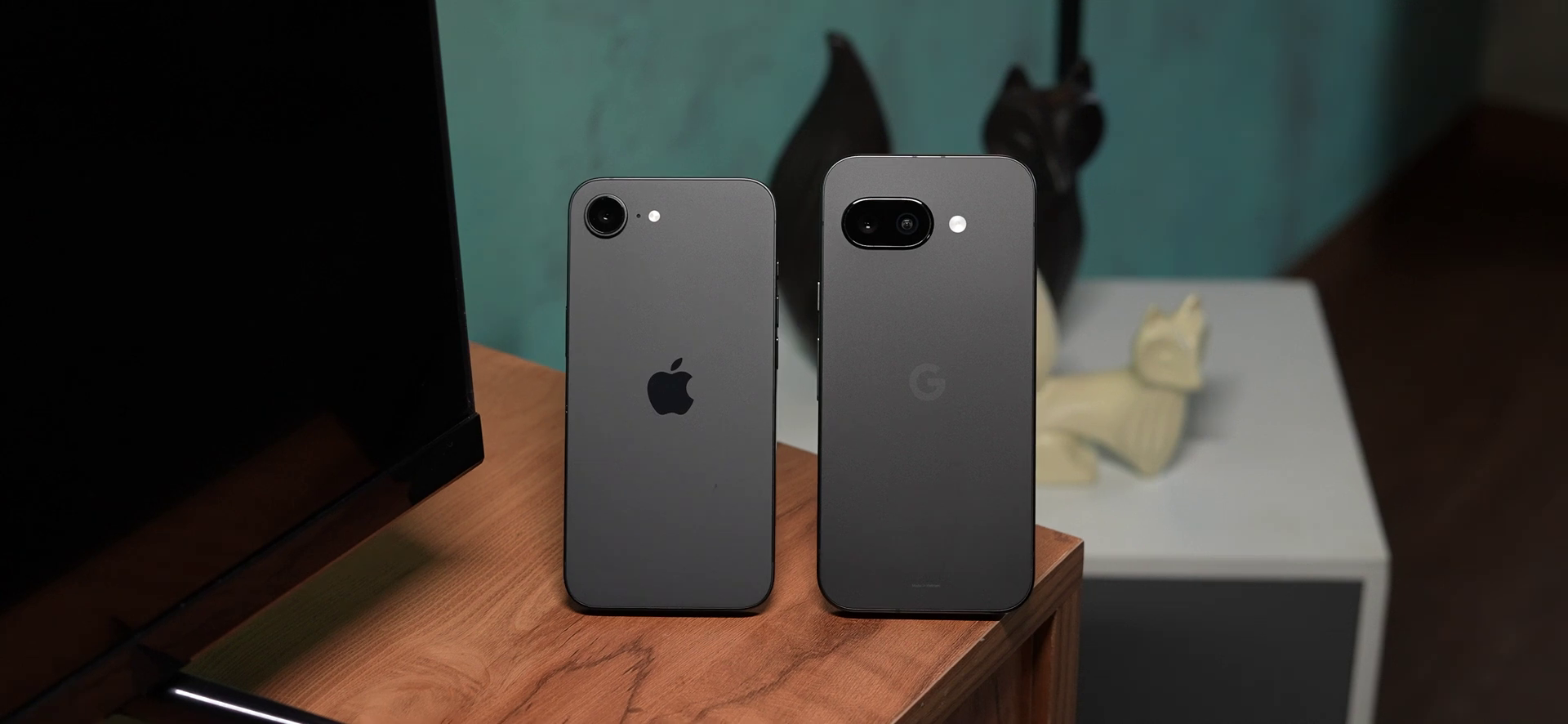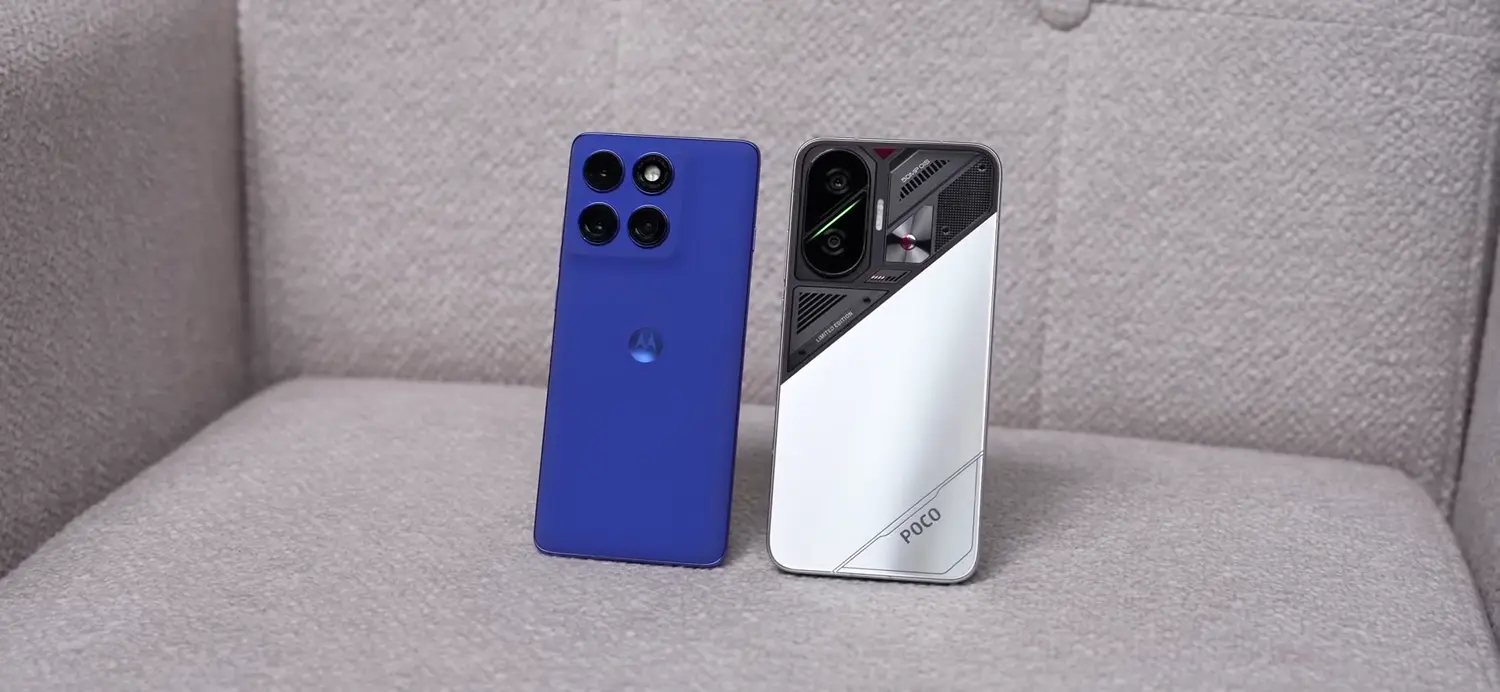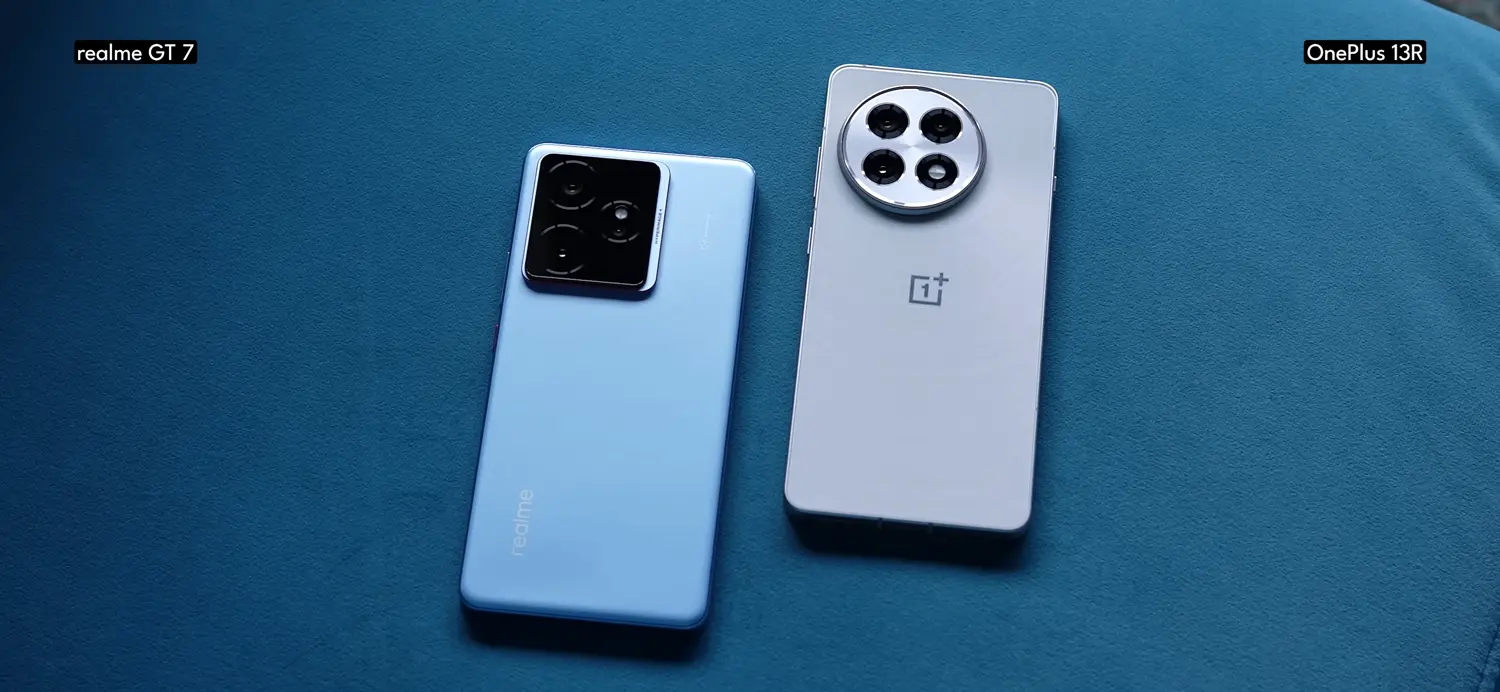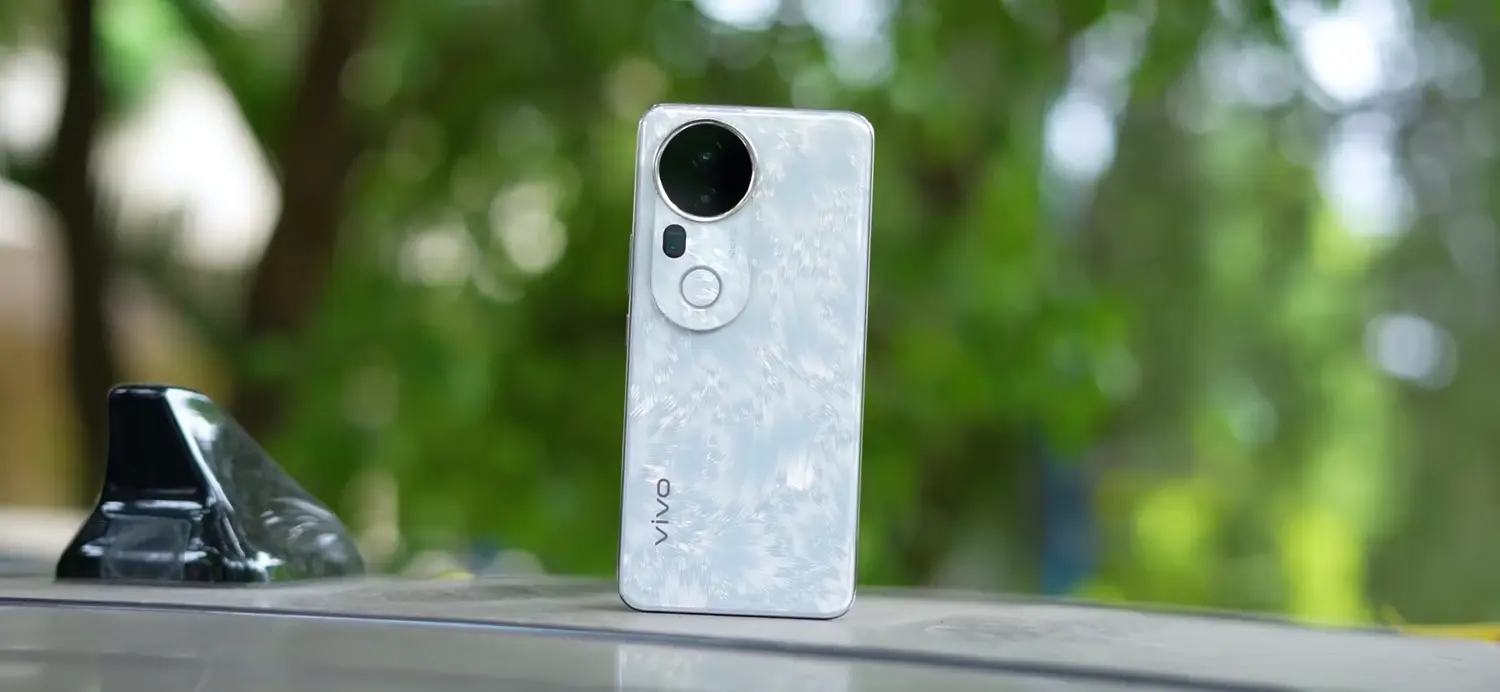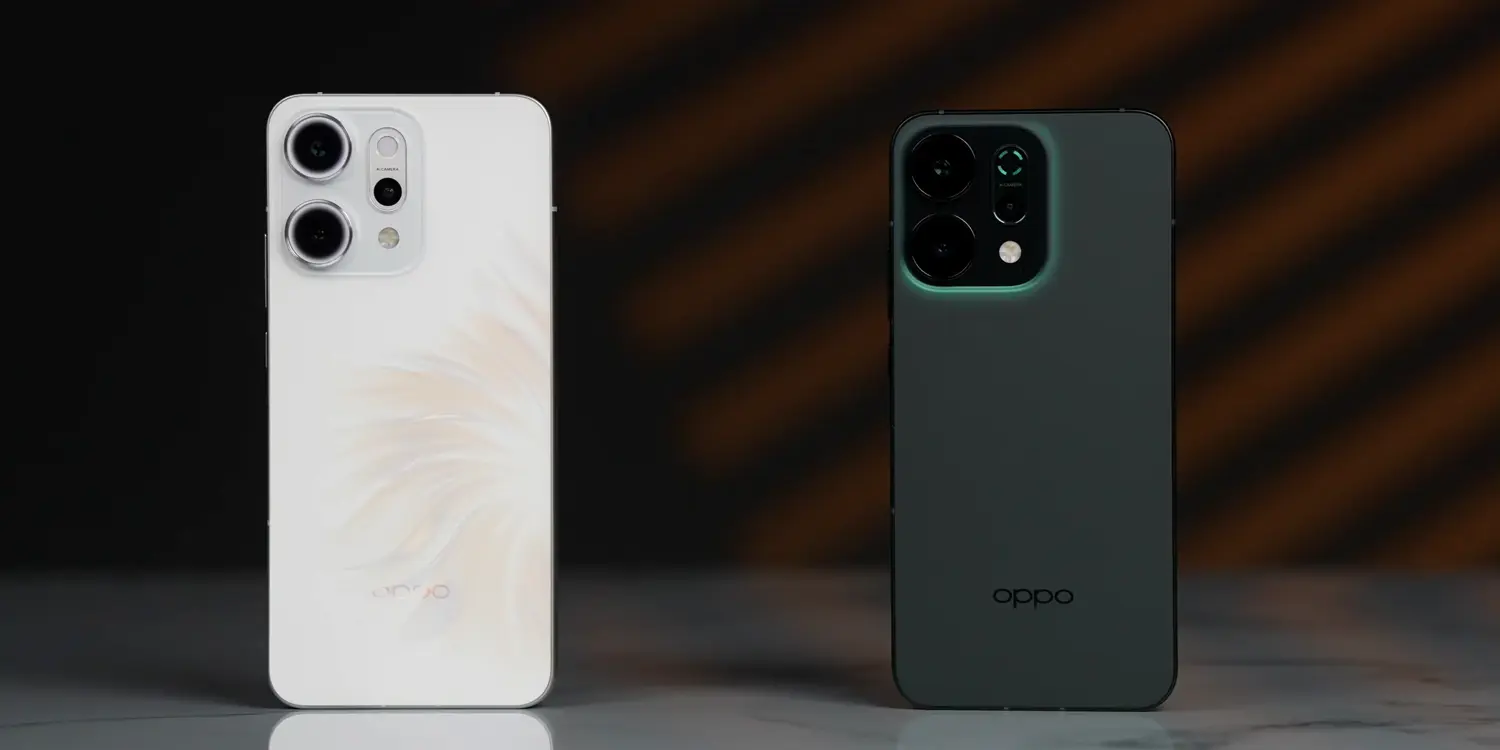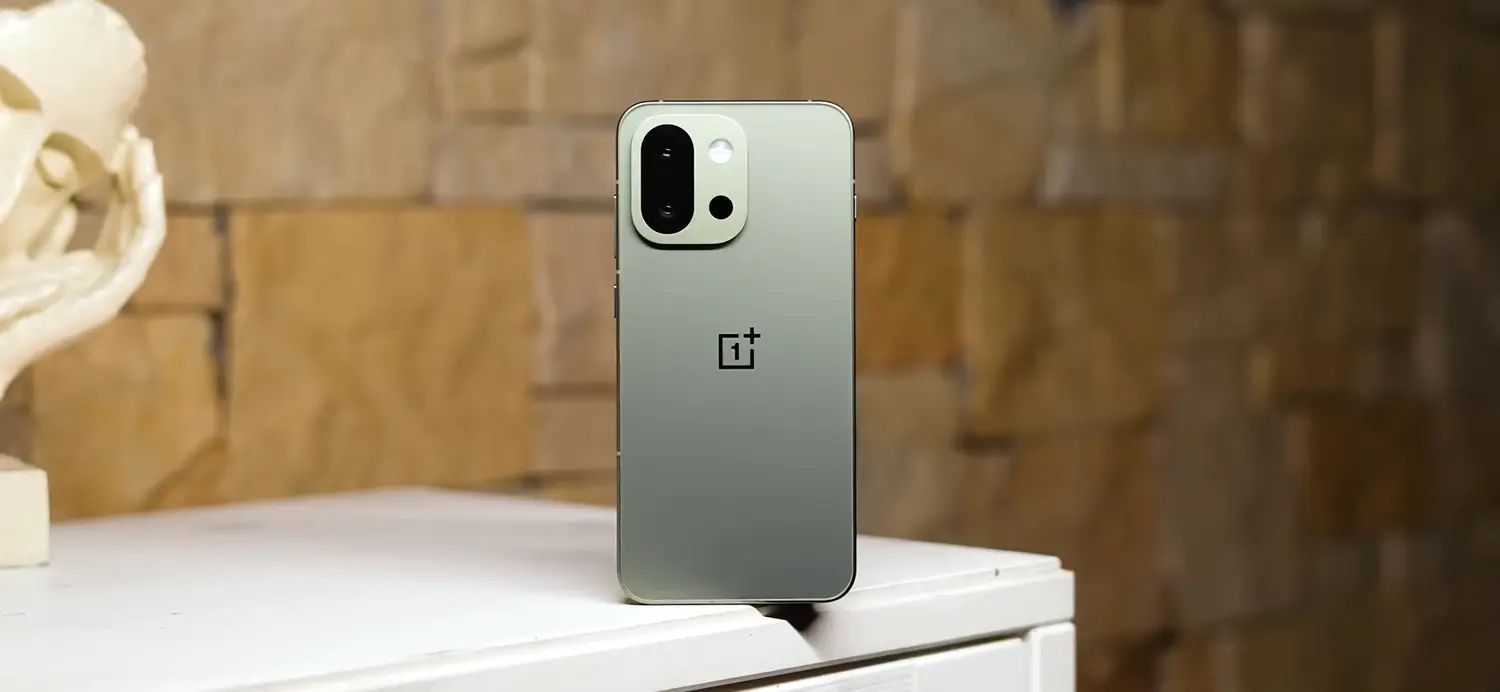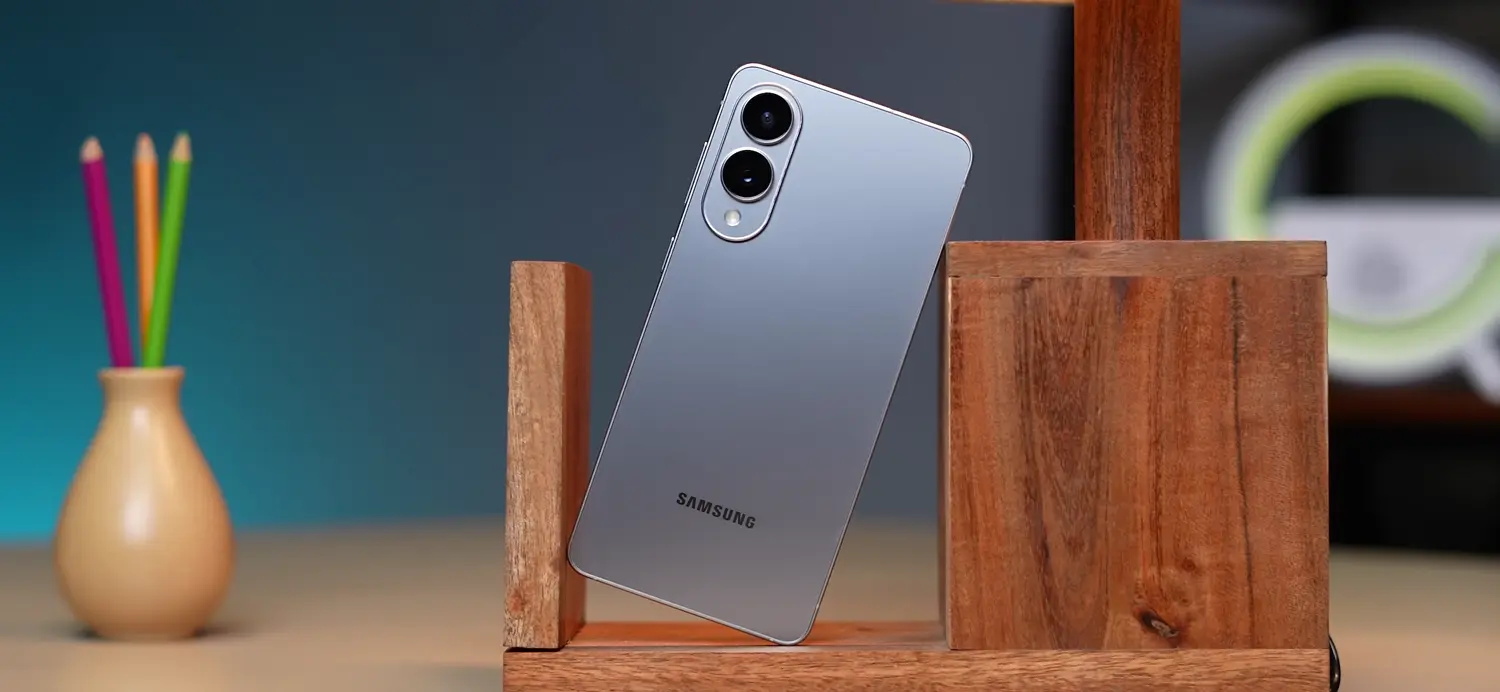The Google Pixel series has always been a favorite among Android fans in India, especially for those who love its clean software and amazing camera. But with the Pixel 8a now available at a discounted price of ₹37,999 (down from ₹52,999) and the newly launched Pixel 9a priced at ₹49,999, many are wondering which one is the better buy in 2025. The Pixel 8a is almost a year old, while the Pixel 9a comes with some upgrades but at a higher cost. So, should you grab the Pixel 8a at its current discount, or wait for the Pixel 9a to drop in price? Let’s break it down in true Dealiser style, comparing the two phones across design, display, software, performance, battery, and cameras, while also looking at how they stack up against other phones in the ₹30,000-₹50,000 price range in India.
Design: Pixel 8a’s Classic Look vs Pixel 9a’s Modern Twist
The design is one of the first things you notice about a smartphone, and both the Pixel 8a and Pixel 9a have their own charm.
Pixel 8a: Familiar and Premium
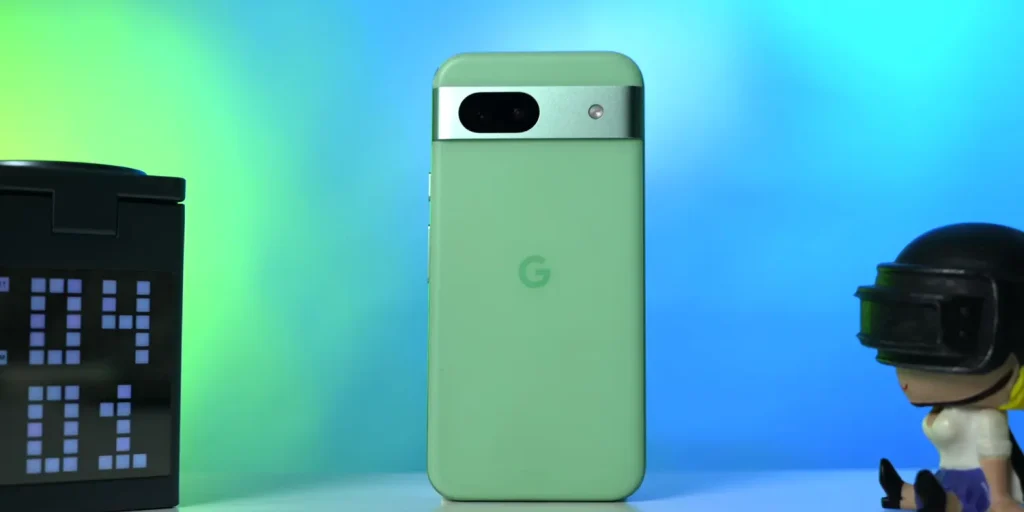
The Pixel 8a sticks to Google’s iconic design with its signature camera visor running across the back. This gives it a distinct “Pixel” look that matches the flagship Pixel 8 series. It has a polished aluminum frame and a plastic back with a frosted finish, which feels premium for a mid-range phone. At 188 grams, it’s slightly heavier than the Pixel 9a, but the difference is barely noticeable when you hold it.
The Pixel 8a also comes with an IP67 rating for dust and water resistance, meaning it can handle splashes or light rain without any issues. It supports 7.5W wireless charging, which is slow but a nice feature to have at this price. The phone is available in vibrant colors like Aloe (green), Bay (blue), Porcelain (white), and Obsidian (black), making it stand out.
Pixel 9a: A Fresh, Flat Design
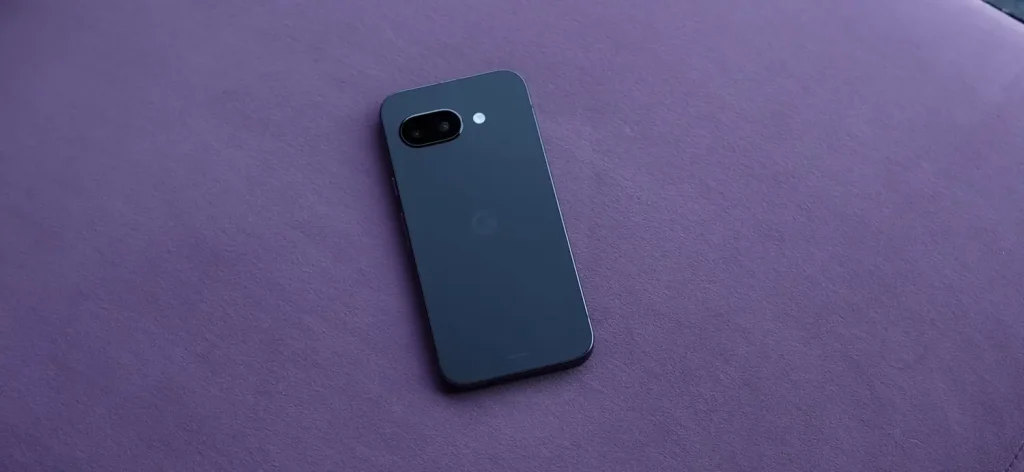
The Pixel 9a takes a bold step away from the classic Pixel look. Gone is the camera visor, replaced by a flush, pill-shaped camera module that blends into the back panel. This gives the Pixel 9a a cleaner, more modern appearance, but some fans might miss the traditional Pixel aesthetic. The phone has a flat design with straight edges, similar to the flagship Pixel 9 series, and uses an aluminum frame with a plastic back.
At 185.9 grams, the Pixel 9a is slightly lighter than the 8a, and it boasts a better IP68 rating, offering improved water and dust resistance. It’s available in Obsidian (black), Porcelain (white), Iris (lavender), and Peony (pink). The flat design makes it feel sleeker, but the lack of the camera bar might make it look less like a Pixel to some users.
Which One Wins?
At ₹37,999, the Pixel 8a still feels premium with its unique camera visor and solid build. The Pixel 9a’s flat design is more modern but might not appeal to those who love the classic Pixel look. If you value wireless charging and a distinctive design, the 8a is a great choice. However, the 9a’s IP68 rating makes it slightly more durable.
Display: Bigger and Brighter on the Pixel 9a?
The display is a key factor when choosing a phone, especially for watching videos, gaming, or browsing.
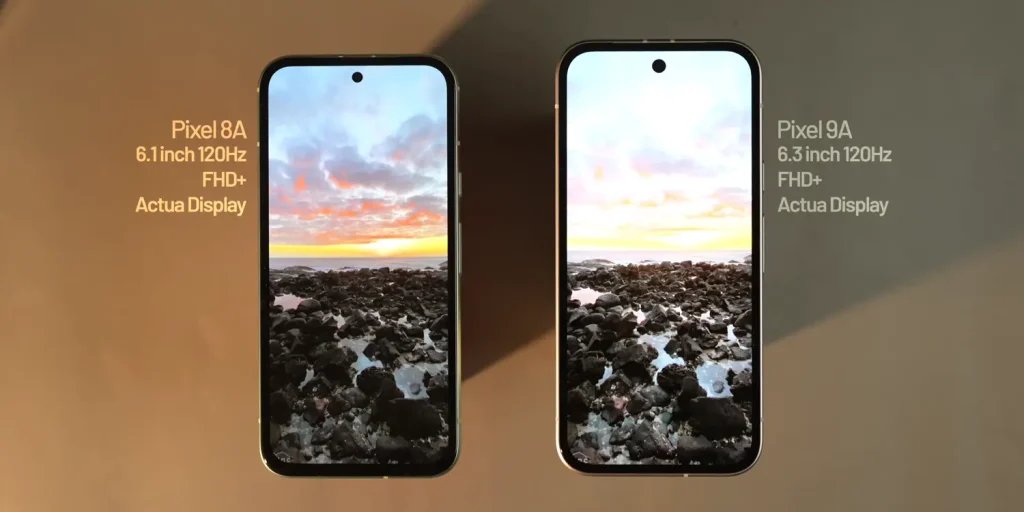
Pixel 8a: Compact and Bright Enough
The Pixel 8a sports a 6.1-inch FHD+ OLED display with a 120Hz refresh rate and a peak brightness of 2,000 nits. It supports HDR and is protected by Corning Gorilla Glass 3. The display is vibrant and smooth, making it great for scrolling through social media or watching Netflix. However, the bezels are quite thick, which makes the phone look a bit dated compared to competitors like the Realme GT 6T or iQOO Z9 Pro.
In real-world use, the Pixel 8a’s display is bright enough for outdoor use, and the compact size makes it easy to handle with one hand. The Always-on Display feature is a nice touch, showing notifications without unlocking the phone.
Pixel 9a: Larger and Brighter
The Pixel 9a steps up with a larger 6.3-inch FHD+ pOLED display, also with a 120Hz refresh rate. It’s significantly brighter, reaching up to 2,700 nits (or 2,076 nits in some tests), making it easier to use in direct sunlight. Like the 8a, it’s protected by Gorilla Glass 3 and supports HDR, but it lacks the Always-on Display feature, which is a surprising omission.
The bigger screen is great for media consumption and gaming, but the bezels are still noticeable, similar to the 8a. In side-by-side tests, both phones look equally bright when playing the same content on Netflix, so the brightness difference might not be as significant in daily use.
Which One Wins?
The Pixel 9a’s larger and brighter display is a slight upgrade, especially for outdoor visibility. However, the Pixel 8a’s compact size and Always-on Display make it more practical for one-handed use and quick glances. At ₹37,999, the 8a’s display is still very good for the price, and the difference isn’t big enough to justify the 9a’s higher cost unless you really want a bigger screen.
Software: Same Pixel Experience, Different Update Periods
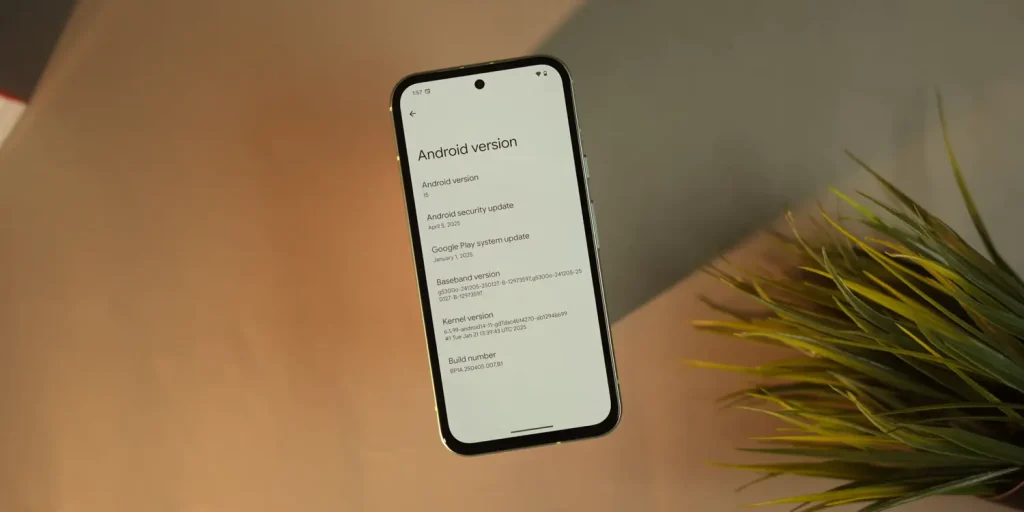
Google Pixels are known for their clean Android experience and long software support, which is a big reason why people choose them.
Pixel 8a: Android 15 with Long Support
The Pixel 8a launched with Android 14 but is now running Android 15, offering a smooth, bloat-free experience. Google promises 7 years of OS and security updates, meaning the 8a will get updates up to Android 21 (2031). This is a huge plus for those who want a phone that stays relevant for years.
The 8a includes all the latest Pixel AI features, like Magic Editor in Google Photos, Gemini Live for natural conversations, and advanced tools like Photo Unblur and Best Take. These features make editing photos and interacting with the phone more intuitive. For example, you can ask Gemini to explain a concept from a YouTube video and even get timestamps for specific parts, which is great for students.
Pixel 9a: Latest Android with Extended Support
The Pixel 9a comes with Android 15 out of the box and also gets 7 years of updates, taking it up to Android 22 (2032). It has the same AI features as the 8a, including Magic Editor, Add Me, and Gemini Live. However, these features are no longer exclusive to Pixels, as brands like Samsung, Xiaomi, and Motorola now offer similar AI tools.
Which One Wins?
Both phones offer the same software experience, with no exclusive features on the Pixel 9a. The only difference is that the 9a will get one extra year of updates (Android 22 vs Android 21). At ₹37,999, the Pixel 8a’s software support is more than enough for most users, making it a better value.
Performance: Tensor G4 vs Tensor G3
Performance is where Pixels have historically lagged behind competitors, especially for gaming.
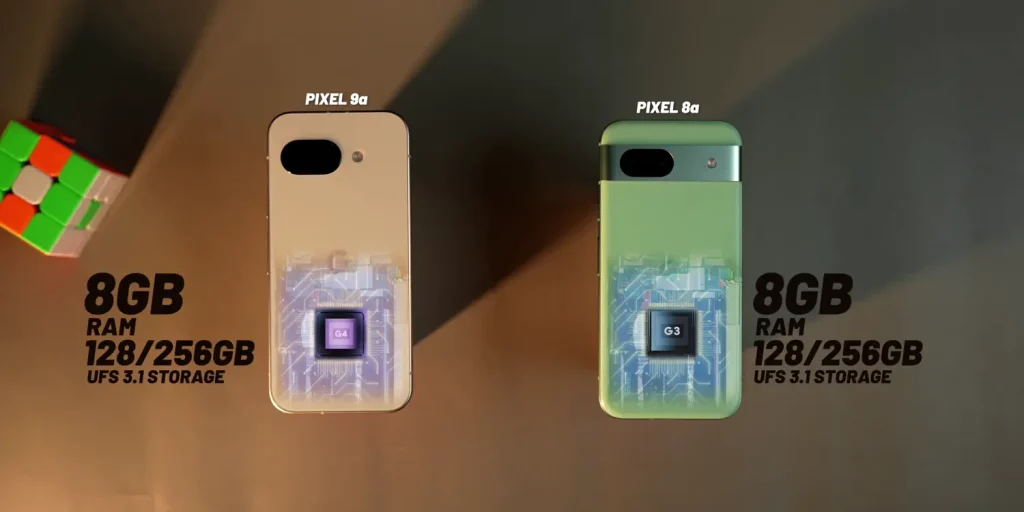
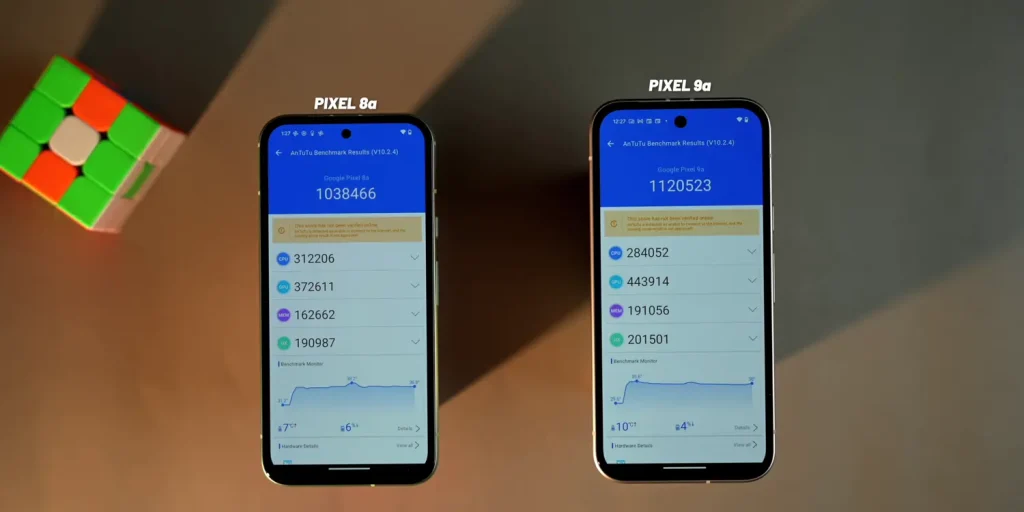
Pixel 8a: Decent but Not Great
The Pixel 8a is powered by the Google Tensor G3 chipset with 8GB of RAM and 128GB or 256GB of storage. It’s fine for everyday tasks like browsing, social media, and light gaming, but it struggles with heavy games like Genshin Impact or Wuthering Waves, where frame drops are noticeable at high settings. In benchmarks like AnTuTu, the 8a scores slightly lower than the 9a, but the real-world difference is minimal (about 7.6% better on the 9a).
The 8a also has heating issues during extended use, like downloading large files on 5G or gaming for long periods. This is likely because it lacks a cooling layer, which is a common cost-cutting measure in the Pixel A series.
Pixel 9a: Slight Improvement with Cooling
The Pixel 9a uses the newer Tensor G4 chipset, also with 8GB of RAM and 128GB or 256GB of storage. The Tensor G4 is a minor upgrade, offering better energy efficiency and slightly faster AI processing. It also includes a copper vapor chamber for better heat management, which makes it run cooler during intensive tasks. However, gaming performance is still not great, with frame drops in heavy games like Wuthering Waves.
Which One Wins?
The Pixel 9a’s Tensor G4 and cooling layer give it a slight edge, especially for those who use their phone for demanding tasks. However, for most users, the Pixel 8a’s performance is good enough at ₹37,999, especially for non-gamers. Compared to competitors like the Realme GT 6T or iQOO Z9 Pro, both Pixels lag in raw performance, as these phones use more powerful chipsets like the Snapdragon 7 Gen 3.
Battery: Pixel 9a Takes the Lead
Battery life and charging speed are crucial for daily use, especially for students and professionals.
Pixel 8a: Average Battery Life
The Pixel 8a has a 4,492mAh battery, which lasts about a day with medium usage (watching videos, browsing, light gaming). With heavy use, you might need to charge it by evening. The 18W charging speed is slow by 2025 standards, taking around 1 hour 20 minutes to fully charge. Wireless charging at 7.5W is a bonus, but it’s too slow for practical use. Heating issues during charging or heavy use are also a concern.
Pixel 9a: Bigger and Better
The Pixel 9a has a 5,100mAh battery, the largest in any Pixel phone. It lasts up to 30+ hours with regular use and supports 23W wired charging, which is faster than the 8a but still behind competitors offering 65W or more. The 7.5W wireless charging remains unchanged. The addition of a vapor chamber helps keep the phone cooler during charging and heavy tasks, improving battery longevity.
Which One Wins?
The Pixel 9a’s larger battery and faster charging make it a clear winner, especially for heavy users. However, the Pixel 8a’s battery is decent for the price, and at ₹37,999, it’s acceptable for light to medium use.
Cameras: Pixel 8a Holds Its Own
The camera is the main reason many people buy Pixel phones, but the 9a has a surprising twist.
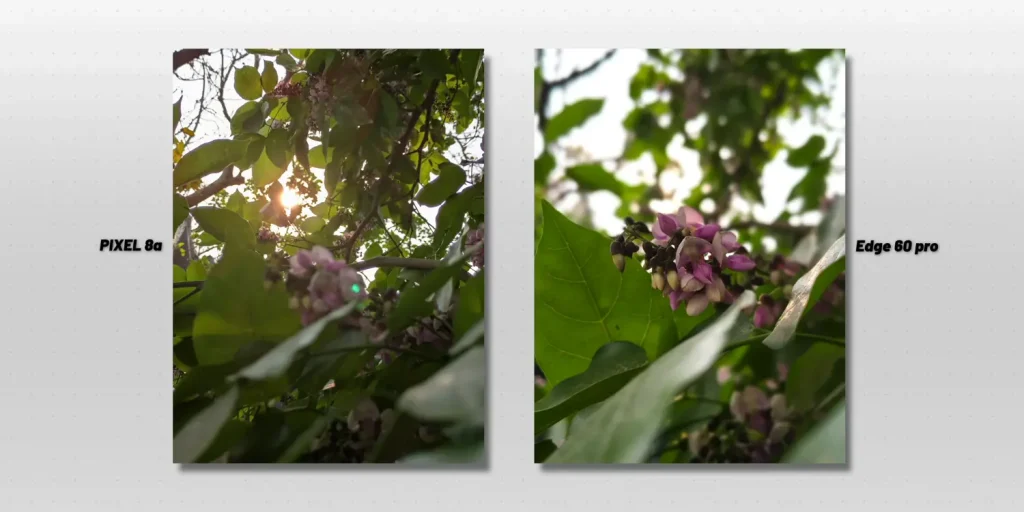
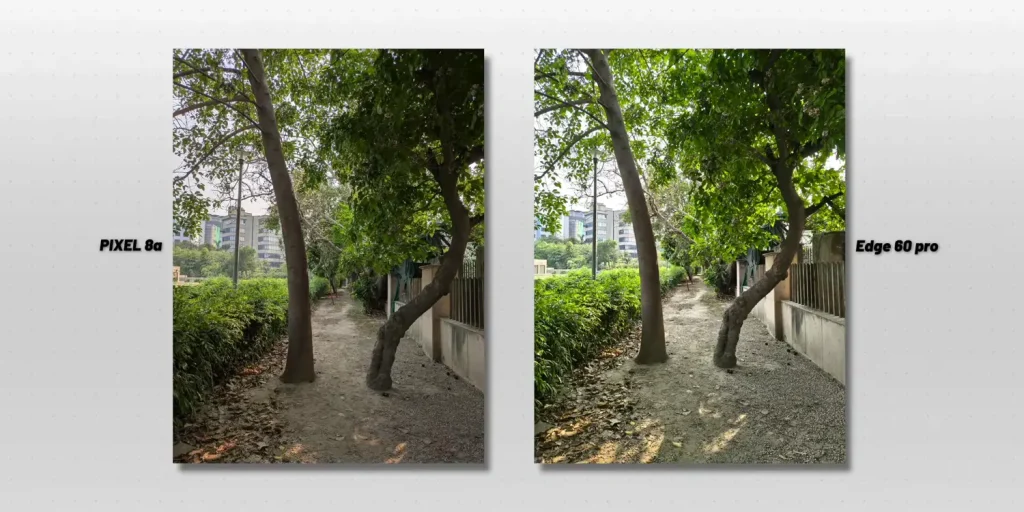
Pixel 8a: Reliable Pixel Camera
The Pixel 8a features a 64MP primary camera with OIS and a 13MP ultrawide lens, along with a 13MP selfie camera. It delivers consistent, vibrant photos with warm colors and good low-light performance. The camera supports advanced features like Pixel Shift, Auto-HDR, and 4K video at 60fps. However, there’s an occasional bug in portrait mode where the background doesn’t blur properly, which can be annoying.
Pixel 9a: Downgraded but Smarter
The Pixel 9a has a 48MP primary camera with a wider f/1.7 aperture and a 13MP ultrawide lens, plus a 13MP selfie camera. The lower resolution might seem like a downgrade, but the wider aperture improves low-light performance. It also adds AI-driven features like Macro Focus, Astrophotography, and Add Me, which are great for creative photography. However, in side-by-side tests, the 8a’s photos have warmer colors, while the 9a’s are cooler and sometimes oversharpened. Videos on the 8a look slightly better due to the higher resolution sensor.
Which One Wins?
Surprisingly, the Pixel 8a’s camera performs slightly better in some scenarios, especially for videos and warmer color tones. The Pixel 9a’s AI features are a plus, but the 8a’s camera is still excellent at ₹37,999. Compared to phones like the iQOO Z9 Pro or Realme GT 6T, the 8a’s camera holds its own, though competitors often include telephoto lenses.
Specification Table
| Feature | Google Pixel 8a | Google Pixel 9a |
|---|---|---|
| Price (India) | ₹37,999 (128GB) | ₹49,999 (256GB) |
| Display | 6.1-inch FHD+ OLED, 120Hz, 2,000 nits | 6.3-inch FHD+ pOLED, 120Hz, 2,700 nits |
| Processor | Google Tensor G3 | Google Tensor G4 |
| RAM/Storage | 8GB/128GB or 256GB | 8GB/128GB or 256GB |
| Rear Cameras | 64MP (OIS) + 13MP ultrawide | 48MP (OIS, f/1.7) + 13MP ultrawide |
| Front Camera | 13MP | 13MP |
| Battery | 4,492mAh, 18W wired, 7.5W wireless | 5,100mAh, 23W wired, 7.5W wireless |
| Software | Android 15, 7 years (up to Android 21) | Android 15, 7 years (up to Android 22) |
| IP Rating | IP67 | IP68 |
| Weight | 188g | 185.9g |
| Colors | Aloe, Bay, Porcelain, Obsidian | Obsidian, Porcelain, Iris, Peony |
Should You Buy the Pixel 8a at ₹37,999?
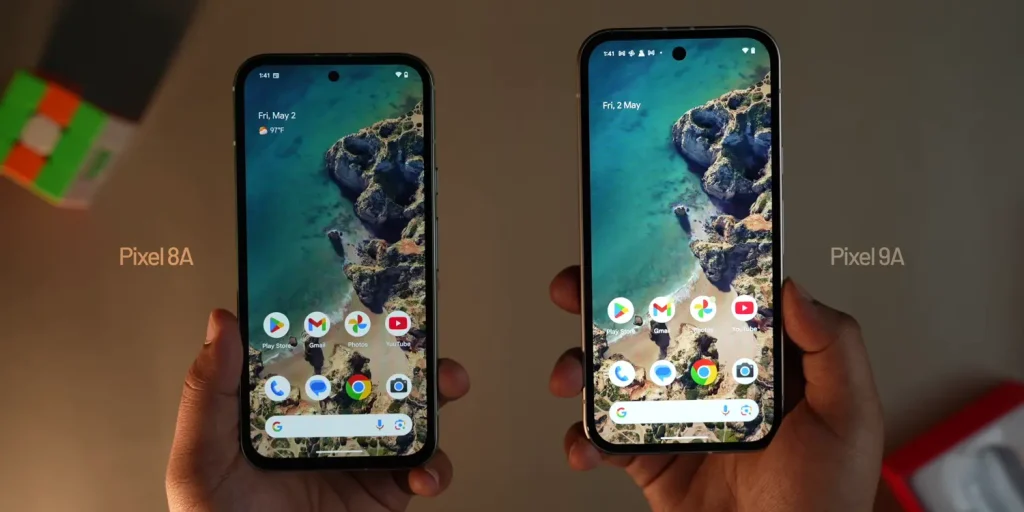
At ₹37,999, the Pixel 8a is a great deal for those who want the Pixel experience—clean software, long updates, and a reliable camera. It’s especially good for students, professionals, or even parents who want a simple, high-quality phone. The camera is still one of the best in its price range, and the 7-year update promise ensures it stays relevant until 2031. However, its performance and battery life are average, and the thick bezels make it look dated compared to competitors like the Realme GT 6T (₹39,999) or iQOO Z9 Pro (₹36,999), which offer better processors and faster charging.
Pros of Pixel 8a
- Affordable at ₹37,999 with SBI card discounts.
- Excellent camera with warm colors and good low-light performance.
- Clean Android 15 experience with 7 years of updates.
- Compact design with wireless charging.
- Premium build with IP67 rating.
Cons of Pixel 8a
- Average performance for gaming and heavy tasks.
- Slow 18W charging and heating issues.
- Thick bezels look outdated.
- Occasional camera bugs in portrait mode.
Should You Wait for the Pixel 9a?
The Pixel 9a, priced at ₹49,999, brings a larger display, bigger battery, and better heat management with the Tensor G4 and vapor chamber. However, the camera is slightly downgraded, and the performance improvement is minimal. If you don’t need the extra battery life or IP68 rating, the Pixel 8a offers similar value at a lower price. Waiting for the Pixel 9a to drop to around ₹40,000 (likely in 6-12 months) could be a smarter move, especially if you want the latest design and longer updates.
How Do They Compare to Other Phones?
In the ₹30,000-₹50,000 range, the Pixel 8a faces tough competition:
- Realme GT 6T (₹39,999): Offers a Snapdragon 7 Gen 3, 5,500mAh battery, and 120W charging, making it better for gaming and fast charging.
- iQOO Z9 Pro (₹36,999): Features a Dimensity 9300+ chipset, 50MP camera, and 80W charging, outperforming the Pixel 8a in raw power.
- Samsung Galaxy S24 FE (₹59,999): Includes Galaxy AI features and a telephoto lens but is pricier.
If you prioritize performance or faster charging, these alternatives are better. But if you want the Pixel’s camera and software, the 8a is still a solid choice.
Final Verdict: Buy the Pixel 8a or Wait?
If you’re a Pixel fan or want a phone with a great camera, clean software, and long-term updates, the Pixel 8a at ₹37,999 is a fantastic deal. It’s perfect for students, parents, or anyone who values simplicity and photography over raw performance. However, if you need better battery life, a modern design, or slightly improved performance, consider waiting for the Pixel 9a to drop in price, possibly by late 2025 or early 2026.
For those who aren’t tied to the Pixel brand, phones like the Realme GT 6T or iQOO Z9 Pro offer better performance and charging at similar prices. Ultimately, the Pixel 8a is worth it if you love the Pixel experience, but it’s not the best all-rounder in 2025.
